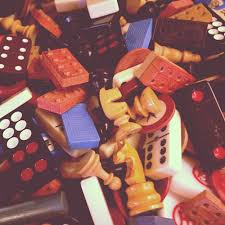 One of the major topics of this blog is game design. It’s an important concern for any game, serious or otherwise, but especially for serious games.
One of the major topics of this blog is game design. It’s an important concern for any game, serious or otherwise, but especially for serious games.
Here are a few reasons why:
- The mechanics create the experience. Game design is largely a question of mechanics. Take, for example, one of the most famous games, Monopoly. The mechanics create a long game of rolling, moving, buying, building, and paying, which isn’t fun for a lot of people who aren’t in the mood for a lengthy financial battle of attrition. Nor, arguably, is it a particularly good simulation of real estate investment, in which opportunities are far less random, and outcomes far less deterministic than they are in Monopoly. Therefore, Monopoly‘s mechanics create an experience that is neither fun, nor particularly instructive (if your goal is suspension of disbelief, or teaching about a particular financial sector).
- The mechanics tell a story. Game design aficionados often talk about “narrative,” the story that emerges from playing the game. Sometimes, the story is very rich, and very obvious, such as in role-playing games like Dungeons & Dragons. Other times, the story is less obvious, and may be about the players themselves, not what the game depicts. (“Remember when Jane bluffed you out of that big pot when we were playing poker?”) Part of the trick of game design is picking the mechanics that the mechanics that will create a story that the players find interesting and memorable. In a serious game like The Beer Game, which is designed to teach people about supply chain management, the simplified experience of the game must capture the essential aspects of the
 more complex reality of real-world supply chains.
more complex reality of real-world supply chains. - The mechanics tell many stories. Games should present players with a series of interesting decisions. Therefore, games are engines for producing multiple results. In some cases, the game present a puzzle that the game challenges you to figure out. Playing The Beer Game creates a story about making many common mistakes, such as unwittingly creating bottlenecks, before figuring out the strategy that works best. Other games are not driving towards a particular narrative (also known as a dominant strategy), but instead are trying to create many possible experiences and outcomes. If you are designing a serious game about creative problem-solving, you definitely don’t want to create mechanics that limit player choices to a single right answer.
- No one gets the mechanics right the first time. Game design is a lot like writing, or computer programming: your first draft, or first version, is never the same as the final version. Even the best game designers go through the process of designing mechanics, “playtesting” the game, and then modifying or discarding mechanics that don’t work. As I’ve learned from interviewing game designers for a podcast, practically everyone starts with a more complex design to start, and then trims mechanics that seemed like a good idea, but don’t really contribute to the overall experience enough to merit keeping them. Every mechanic represents a rule that a player has to learn, or a programmer has to code, in the case of software-based games.
Given these aspects of game design (and there are others that I’ve left out), not everyone can sit down and design a good game. It takes time to work through designs, adding, removing, and changing mechanics over the course of multiple playtests. The more games you’ve played, the larger your mental library of possible mechanics to use. If you’ve never played a game like Cosmic Encounter, for example, you might not think of giving each player a special ability that allows them to break the rules in a specific way.
Serious games take an additional amount of game design, since it’s common to tweak them for specific situations. A good example is the City Of San Jose, which used a modified version of Buy A Feature to ask citizens about their priorities for the municipal budget. The designer, Luke Hohmann, modified the game beyond just changing the items that players would choose from product features to budget line items. He also added a new decision, cutting programs to add money that the players could invest in more desirable programs.
That was a fairly easy design task for Luke, since he’s an experienced game designer. Someone brand-new to game design might not think of adding that option, or know how to implement it in a way that doesn’t “break” the game. You can easily make the budget items available for cutting worth too little, or too much. You can make the process of deciding what to choose too obvious and easy, in which case you might as well just give the players the extra money to start, or too hard, in which case, they might spend the entire game figuring out what to cut, instead of what to fund. And that’s just a relatively simple game, with very few rules.
I don’t want to discourage people from designing games. It can be a very rewarding past-time, particularly if you enjoy building and adjusting something until it becomes something that other people can enjoy. However, it’s worth pointing out that you can’t hand someone with no experience or interest in designing games, and expect them to create a great game, but this is not as simple as it seems.
Game design is a skill, and it takes time and effort to master it. If you want to use games for anything serious, such as market research, political engagement, corporate training, or any of the other great ways to use serious games, I strongly recommend getting someone with some game design experience, or willingness to learn. If you want to design any kind of game, played for serious aims or just for fun, I recommend just diving into the process. There are great books, blogs, and other resources to help, plus plenty of games you might use for inspiration. There’s nothing quite as educational as building your first version of a game, and then figuring out what to do next.

